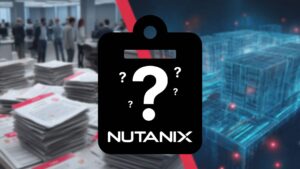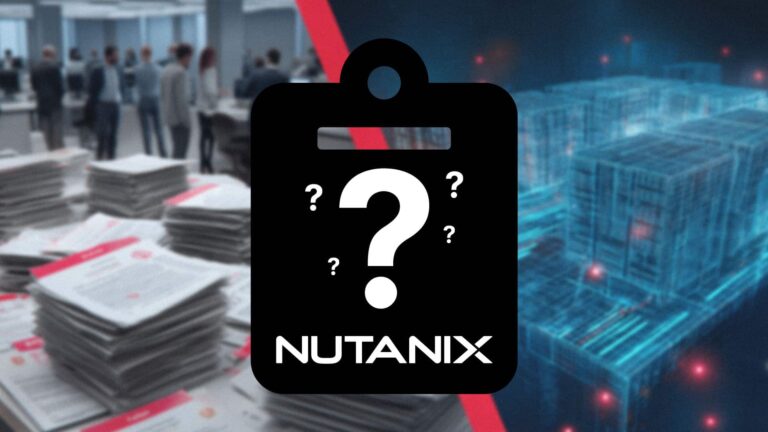Nathan Biggs (@nathanbiggs), CEO
About a month ago I published a blog post reflecting on a positive and challenging 2016. I also said that a week later, I would publish a new blog looking forward to 2017. Well, becoming a first-time grandparent to a beautiful baby girl got in the way of that schedule, but I am fulfilling my commitment by getting this out before the end of January.
For many years people have been talking about cloud computing, and the operational advantages and cost containment that could be provided in such an environment. Industry stalwarts such as Amazon AWS, Microsoft Azure, and the Google Cloud Platform (GCP) have established themselves as worthy public infrastructure as a service (IaaS) options for many workloads. The ready availability of compute and storage has shortened the time to market for new startups, and provided burst capacity and future migration paths for established organizations.
Through all of the claims of public cloud advantages, both real and imagined, House of Brick has been evaluating the benefits and challenges related to running Oracle workloads in the public cloud. Up until now, House of Brick customers have largely ignored the public cloud for their business/mission critical Oracle workloads, and focused instead on VMware-based private cloud architectures. Barriers that our customers have faced have include:
- Lack of performance Service Level Agreements (SLA) with public cloud providers
- Lack of license portability to the cloud
- Licensing costs in the cloud
- Intrusion security
- Data containment for privacy and compliance
- Incompatibility with private cloud environment (VMware)
With many of these issues starting to be addressed to a greater or lesser degree, we are now seeing definite movement within our customer base for considering a public component in their cloud strategies.
Already in 2017, House of Brick has been involved in multiple major Oracle cloud-computing projects. These projects are with both customers and cloud vendors. As we look into the rest of 2017 and beyond, I expect that we will continue to see momentum building in this area.
Following are some key developments that we are watching in the industry, relative to running business critical systems in a public/hybrid cloud environment:
- The Licensing Oracle in a Cloud Computing Environment document – Oracle’s January 23, 2017 revision of this document was a recent surprise that may have lasting and negative consequences on customers’ ability to run Oracle in the AWS or Azure public clouds. Please see Dave Welch’s blog post analyzing the revision and showing how it could more than double the cost to customers who want to use that policy.
- The impact of the announcement on the VMware Cloud on AWS – As I previously identified in a blog post following the VMware and AWS announcement, we have yet to form an opinion as to whether the VMware/AWS cloud will qualify for compatibility with the Oracle policy listed in item 1. If so, this will be the first (and only) cloud that is authorized by Oracle to bring your own license while maintaining compatibility with VMware infrastructures and management tools. If they do not fall under the policy, then I expect VMware and AWS to provide a processor-based license compatible environment. In any case, it will be a huge benefit to VMware customers.
- Non-Oracle Authorized Cloud Environments – For those cloud providers that are not mentioned in the Oracle Cloud Environment policy, the service options for Oracle customers are limited. They can provide dedicated infrastructure that can host Oracle workloads using the traditional processor-based licensing metrics, such as what our friends at Skytap do. They may also be able to allow temporary usage under an Oracle Unlimited License Agreement (ULA), unless the language in that ULA specifically precludes use in a cloud environment. Otherwise, cloud providers may be completely shut out from providing service for Oracle workloads.
- The Oracle Cloud – Oracle has been aggressively auditing and charging customers for both non-contractual claims and valid compliance issues. The not-so-free get out of jail card for these audit situations has been for the customer to purchase significant amounts of cloud credits from Oracle. Larry Ellison’s ridiculous claims about his cloud being 20 years ahead of AWS notwithstanding, Oracle does seem to be creating a one-way highway to their own cloud for many customers. I got an email from Wikibon.com this morning asking “Is Oracle Dead Because of Cloud?” When I clicked on the link for the series I see that it is the Conquering Cloud series sponsored by Oracle. My guess is that their answer will be “no.”
Given some of these considerations (and in some cases, in spite of them), I expect that discussions with our customers about running Oracle in the cloud will continue to be a hot topic this year. Customers are demanding robust solutions for both in-house private clouds, as well as public cloud options. The winners in all of this are those cloud providers, such as Skytap and VMware Cloud on AWS, who have taken Oracle licensing into account when creating service offerings for their customers.
2017 should be a fun year.






